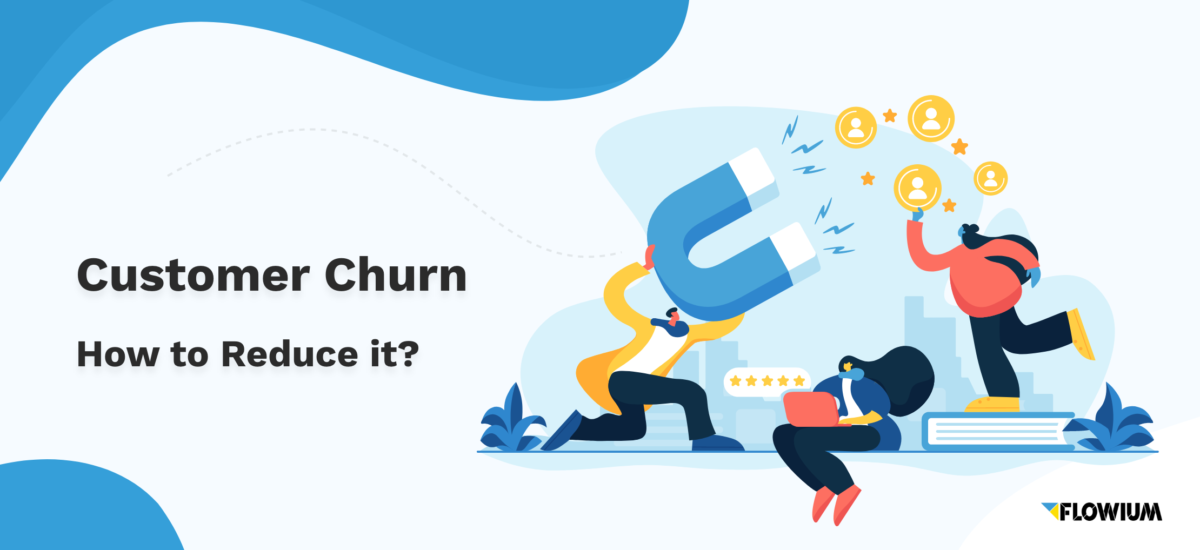Customer churn is a thorn in every eCommerce business. The hard truth is if you’re not doing everything you can to reduce customer churn, you’re likely missing out on big bucks.
While this sounds terrifying, reducing churn is the most effective way of increasing lifetime customer value and unlocking new profit opportunities for your business.
The logic is pretty simple – it’s easier to work on your retention rate than your acquisition rate because you already have a relationship with your customers.
Reducing churn is no easy task, but luckily there are many ways to reduce your churn rate as an eCommerce business. And that’s exactly what we’ll discuss in this guide.
What is Customer Churn?
If you’re an eCommerce business owner, you may already be familiar with the customer churn definition. However, to make sure we’re all on the same page, let’s define customer churn.
Customer churn, also known as customer attrition, is the number of customers who stop buying a company’s products or services over a given time period.
For an eCommerce business model, this number is usually expressed as a percentage of customers who stop buying from your store by the end of a specific period of time.
However, depending on your customer churn model, this rate can also be defined as:
- The number of customers who stopped buying from you
- The amount of monthly recurring revenue (MRR) lost
- The percentage of monthly recurring revenue (MRR) lost
Customer churn rates are calculated by taking the number of customers who have stopped buying from your store during a specified period, divided by the total number of customers at the start of that period.
The resulting number indicates the percentage of customers who stopped buying from you during that period.
Why Customer Churn Is Important?
It’s essential to understand how customer churn affects your organization because it can impact your bottom line.
While the customer churn rate indicates how many customers left your business over a given time period, it’s not just about how many customers leave, but how much profit they take with them when they go.
💡 It is estimated that businesses in the US lose approximately $136 billion each year due to customer churn that could have been avoided. Moreover, it’s proven that a 5% increase in customer retention can result in at least a 25% increase in profits for the company.
Given these numbers, it’s evident that even a low percentage of customer churn can significantly affect your revenue. So, the lower your customer churn rate, the more likely you will be successful in growing your business.
Top 8 Reasons Why Customers Churn
If you’ve been experiencing customer churn in your eCommerce business, you might wonder why customers churn.
There are several causes of customer churn, most of which come down to customer service issues.
Here are the top 8 reasons why customers churn.
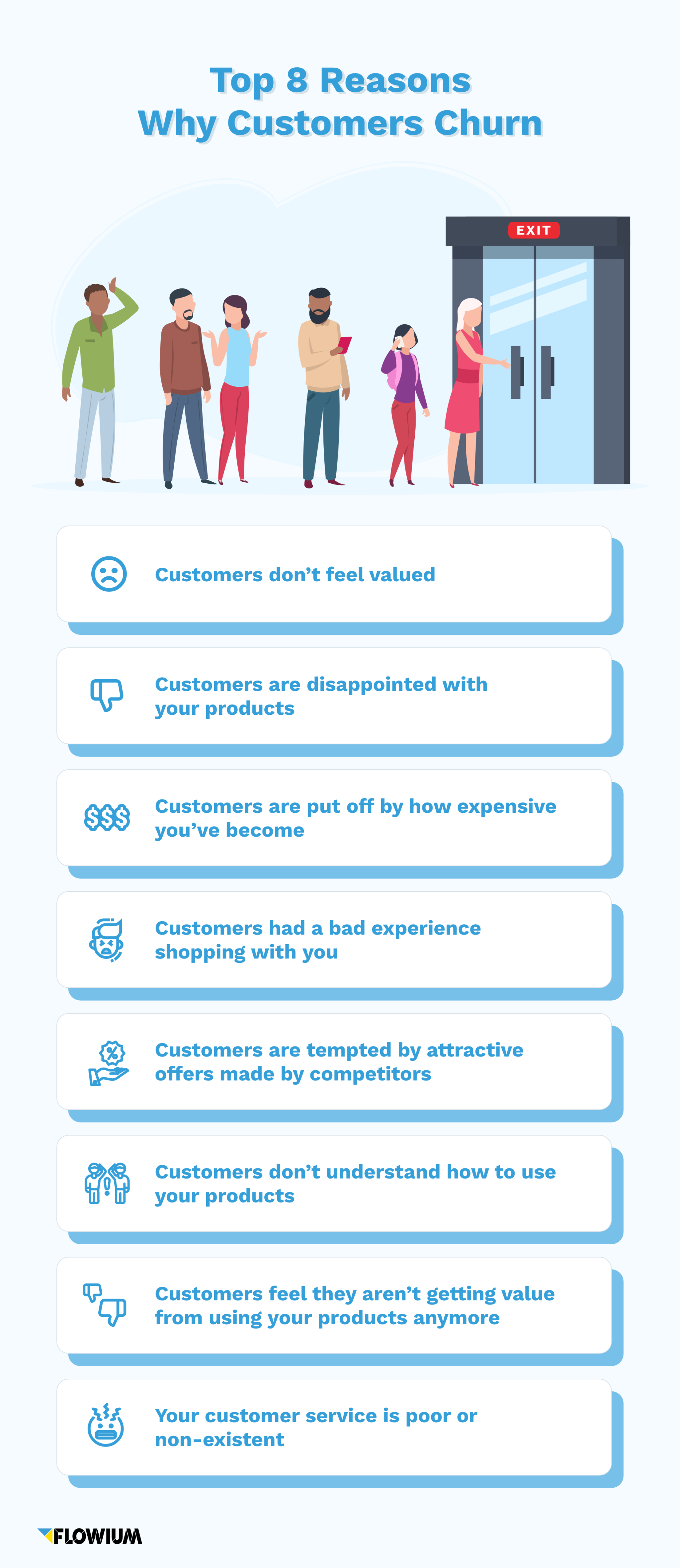
Customers don’t feel valued
Not feeling appreciated by your company is one of the top reasons why customers leave. Customers who feel valued by your business will likely stay with you longer.
This means they need to feel like they matter to your brand and that they’re important enough for you to keep them happy.
The best way to do this is by providing excellent customer service, whether it’s via phone or in person.
Customers are disappointed with your products
If you’re not delivering what was promised, or if you’re selling something that doesn’t live up to expectations, it’s unlikely that your customers will stay around for long.
Customers who aren’t happy with what they purchased are also likely to spread negative reviews about your brand, which can damage your reputation and lead more people to abandon ship.
Customers are put off by how expensive you’ve become
While increasing the prices of your products over time is the natural thing to do for any business – eCommerce or not – when you start charging more for your products, people will notice.
And if they believe that your products don’t provide enough value for them to pay higher prices, they’ll likely decide to stop shopping with you.
To avoid this, get back in touch with what your product is really doing for customers and ensure that you’re delivering on those expectations, especially if you’ve increased the price.
Customers had a bad experience shopping with you
A recent study found that 34% of consumers who had just one bad experience with a company would never shop with them again.
Moreover, more than half (59%) would tell their friends not to use the company’s products and services either.
This can happen when you don’t respond quickly enough to customer inquiries or complaints, or fail to fix the issues they may have had with your products or another part of the shopping experience with your brand.
Customers are tempted by attractive offers made by competitors
When a new competitor enters the market, they try hard to attract new customers by offering them low prices or special discounts. This can be very tempting for your customers, who may decide to shop with your competitor to save money.
For example, if your store has been in business for several years and has many loyal shoppers who enjoy your products, but then a new store comes with a broader product catalog or better prices, some of your customers may decide it’s time to move on.
Customers have become savvier and know they can get better deals elsewhere. To stay competitive and retain your customers, increase the value of your products and customer experience at every interaction.
Customers don’t understand how to use your products
Your customers may be confused about what they need and how your product solves their problems.
This can lead to confusion and doubt about the value of your product or service, which will likely send your customers on a quest for alternatives that are easier to use or more intuitive.
Customers feel they aren’t getting value from using your products anymore
If a customer feels that they are not getting value from your product, they will churn. It may be because you changed your product, increased the prices, or no longer provide their favorite product in your store catalog.
Or it could simply be because they no longer need to use your products for reasons outside your control. If that’s the case, they naturally don’t want to pay for something they no longer use or need.
Your customer service is poor or non-existent
One of the main reasons customers churn is poor customer service. It may be because it takes forever for them to get an answer and when they do, it’s not helpful.
This can happen for a variety of reasons:
- You’re too busy solving customer issues and don’t have time to help all of them, which results in long response times
- Your customer support team doesn’t have the skills or experience to handle complex issues
- You don’t have enough people on board to help out with customer queries, which means that solving problems take longer than necessary.
How to Calculate Customer Churn?
Customer churn is a useful metric because it tells you how fast your business is growing and how well you’re retaining customers. High customer churn can indicate that your company isn’t meeting customer expectations and that something needs to change.
To calculate your customer churn rate, you first need to understand that customer churn is usually expressed as the percentage of customers who stop purchasing from you during a given time period.
Here’s a simple customer churn rate formula that you can apply:
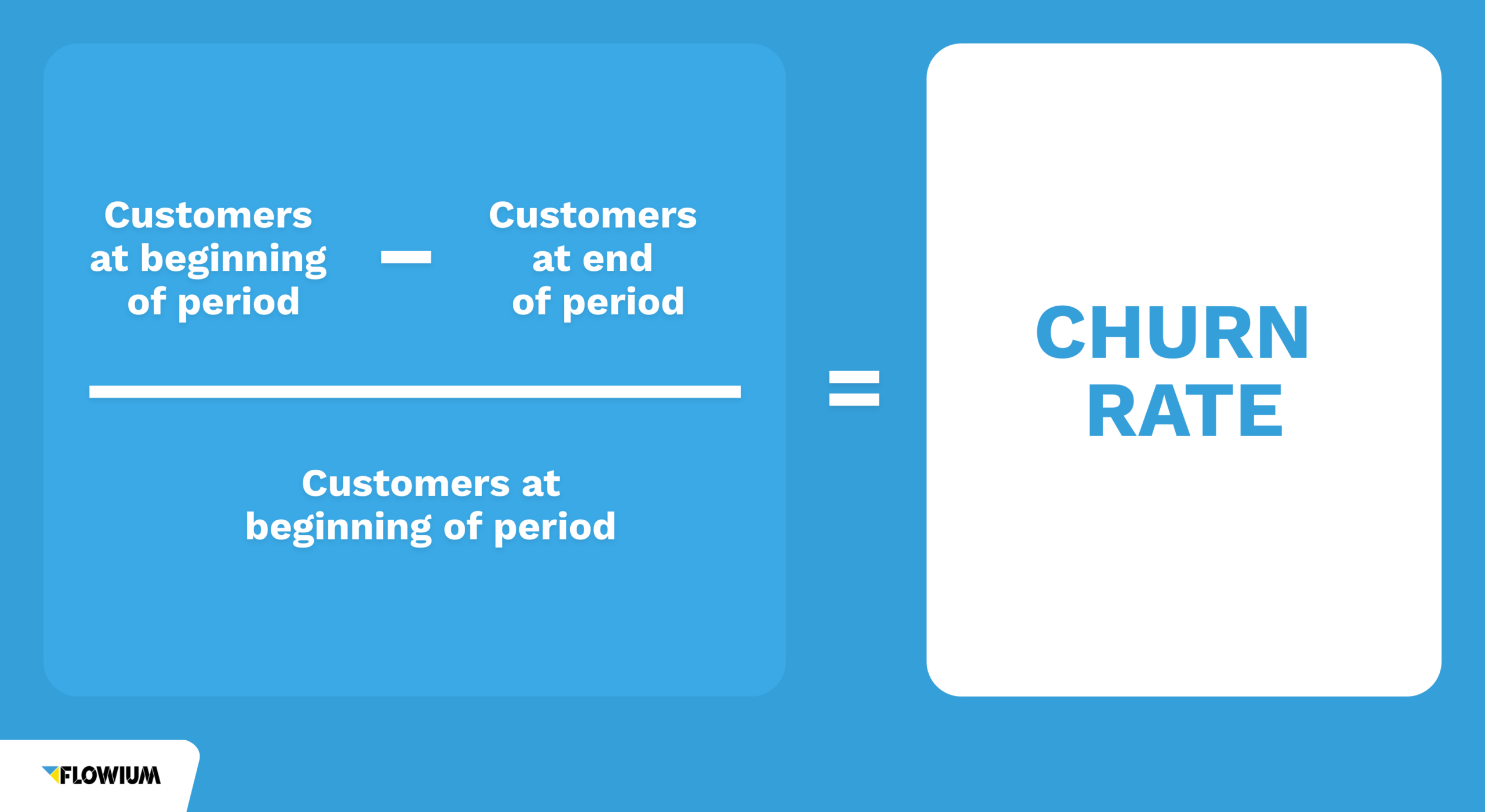
For example, let’s assume you had 500 customers at the beginning of Q1 and you ended that quarter with 480 customers. This means that you lost 20 customers during that period.
Therefore, your customer churn rate is 4%, according to the following calculation:
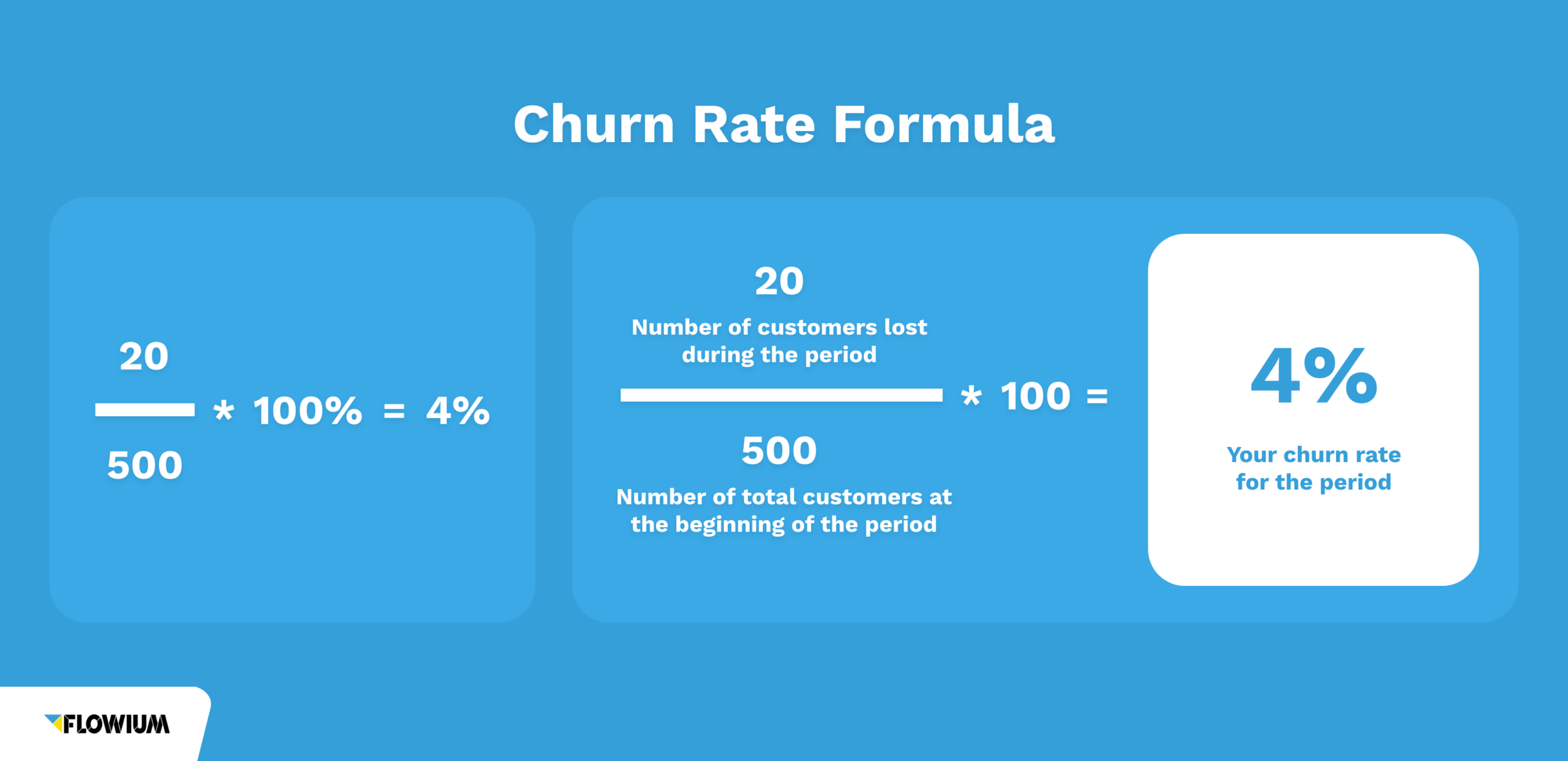
It’s important to note that this is only one way of calculating customer churn rate. Depending on your business model, you may find another way to calculate it more suitable for your business.
Customer Churn Rates by Industry
If you’re in retail or eCommerce, you might be wondering which industries have the highest and the lowest customer churn rates.
So, we’ve compiled data from several sources to determine the customer churn rates for various industries.
Here’s the average customer churn rate in the US by sector, according to Statista:
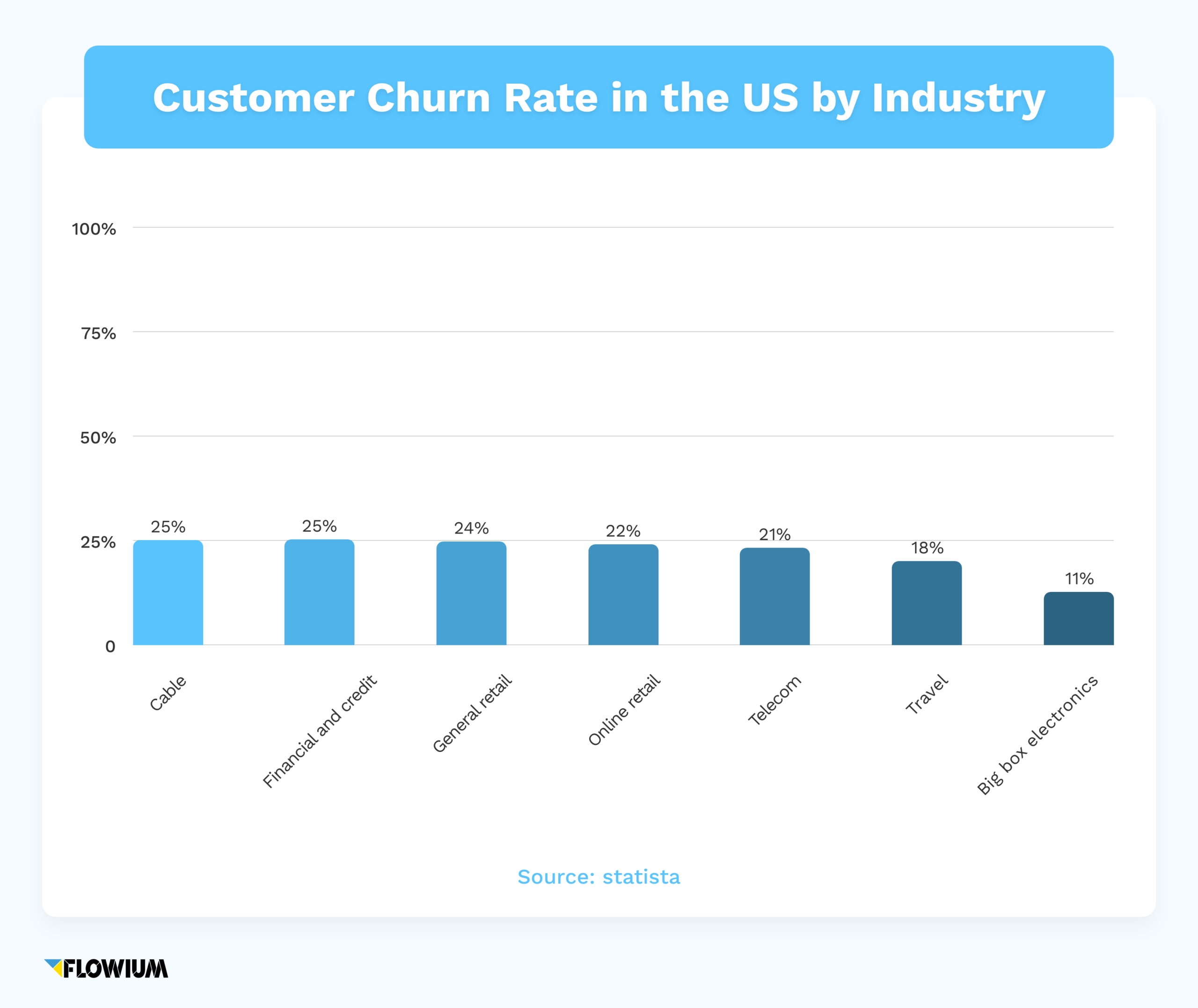
However, according to research by Recurly, when it comes to subscription businesses, churn rates are lower. Here’s an overview of the customer churn rates for subscription businesses across various industries:
- Box of the Month: 10.54%
- OTT/SVOD: 10.01%
- Consumer goods: 9.62%
- Education: 9.61%
- Healthcare: 7.55%
- Consumer services: 7.49%
- Business services: 6.25%
- IoT: 5.88%
- Media and entertainment: 5.23%
- SaaS: 4.79%
How to Categorize Customer Churn?
Customer churn is a statistic that reflects the percentage of customers who stop doing business with your company. It’s a reflection of your customer retention rate and can help you determine whether your customers are happy with their experience.
There are many reasons why customers might leave — they may have found a better solution elsewhere, or they may have had a bad experience with one of your employees.
It’s important to classify the types of churn you experience in order to understand why customers are leaving and how to improve retention.
We can categorize customer churn into four categories. Let’s analyze them.
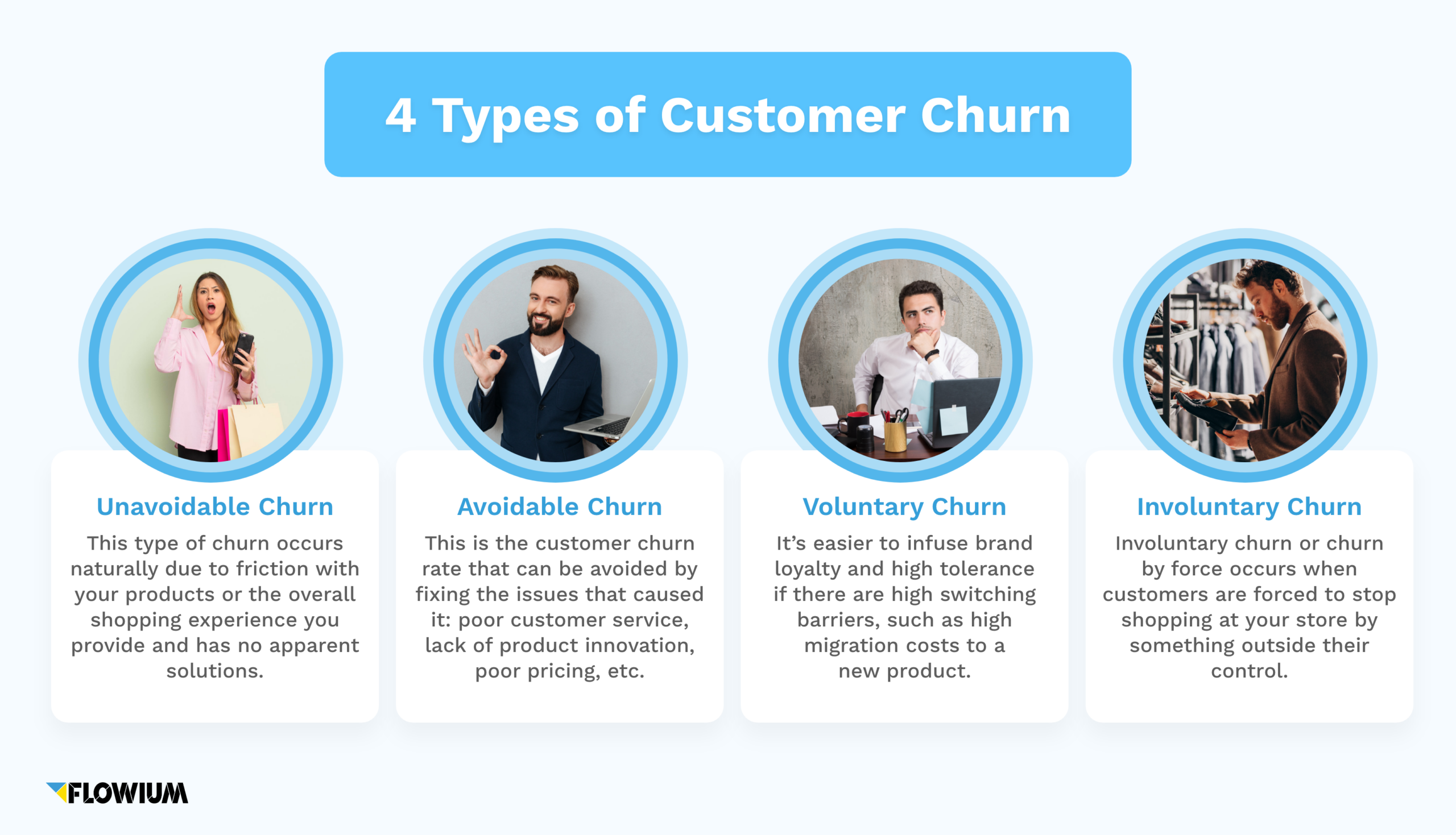
Unavoidable Churn
Every business experiences customer churn, and it’s not always avoidable. Unavoidable customer churn is the result of natural attrition and other factors out of your control that cause customers to leave your company over time.
This type of churn occurs naturally due to friction with your products or the overall shopping experience you provide and has no apparent solutions. Some customers will leave, no matter what you do!
Avoidable Churn
When customers feel like they’re not getting what they want from a company, they may look elsewhere for the same products at lower prices or better service. This can result from poor customer service, lack of product innovation, or poor pricing.
The good news is that most of the reasons customers decide to stop shopping at your store can be addressed. Avoidable churn refers to the customer churn rate that can be avoided by fixing those issues.
💡 One way to combat avoidable churn is to improve your customer’s shopping with you. This can mean offering frequent discounts or coupon codes, improving your customer service, and constantly monitoring the quality of your products.
Voluntary Churn
Voluntary churn or churn by choice is when customers have decided they no longer want to use your products and have chosen not to continue shopping at your eCommerce store.
This kind of churn can be caused by a change in the market, or it could be that the customer simply doesn’t need your product anymore.
It’s common for customers to churn voluntarily — they may stop using your product or service for a number of reasons, including:
- They no longer need it because their life circumstances have changed
- Your pricing changed, and they can no longer afford it
- Your pricing changed, and they feel your product is no longer worth the money
- They found a more suitable alternative
- Their needs have changed, and your product no longer fulfills them.
Voluntary churn can usually be avoided.
Involuntary Churn
Involuntary churn or churn by force occurs when customers are forced to stop shopping at your store by something outside their control.
This type of churn can occur, for example, when a customer moves to another country where they can’t get your products shipped or if they lose their job and can no longer afford to buy products from you.
💡 Involuntary churn is usually considered bad for business since it’s impossible to prevent in most cases.
How to Predict Customer Churn?
If you’re running a business, you know how important it is to keep customers happy. But sometimes, customers will leave no matter how hard you try. Churning customers can be devastating for your bottom line.
The good news is that there are ways of predicting when customers are likely to leave and what you can do about it. Here are three ways of predicting customer churn.
Using Customer Experience (CX) Score
The first step in predicting customer churn is to find out how likely it is that a customer will leave. The answer depends on what you know about each customer and how they interact with your company.
A good way to start analyzing this data is by using the customer experience score (CX).
The CX score uses machine learning algorithms that analyze data from multiple sources – including surveys, call center interactions, and social media – to create an aggregate measure of how customers feel about their interactions with your company overall.
Using this data, it calculates a score between 0 and 100 that indicates how likely an individual customer is to churn based on their recent interactions with your business.
A high CX score means happy customers, while a low CX score means unhappy customers who might be at risk of leaving.
You can use this information to take action before it’s too late — and win back those unsatisfied customers before they decide to shop somewhere else!
Using Customer Data
Another way to predict customer churn is to analyze data from your existing customers. What products do they buy the most? Are there any trends in their usage patterns? How do they find your store? How much time do they spend browsing your product catalog before making a purchase? How long have they been with you?
Finding the answer to these and other similar questions will help you identify patterns that could help predict why customers may churn and which ones will likely churn out next.
Another option is to ask your customers directly why they stopped shopping with you, whether by conducting surveys or using the power of social media.
Using Advanced Techniques Like Machine Learning
Another approach to predict customer churn is to use machine learning algorithms.
These algorithms are designed to learn from data and make predictions based on those insights. The more data you feed the algorithm, the better its predictions will be over time.
This is why machine learning techniques, such as decision trees or neural networks can help you model how different variables affect retention rates.
💡 This approach works best when there are many different input variables and a few output ones.
How to Reduce Customer Churn?
When it comes to customer retention, there are no quick fixes. Reducing customer churn is a complex and lengthy process that requires significant effort from you and your team.
That said, there are several ways to reduce customer churn effectively — and if you can implement some of these, you’ll be well on your way to building long-term customer loyalty and increasing retention rates.
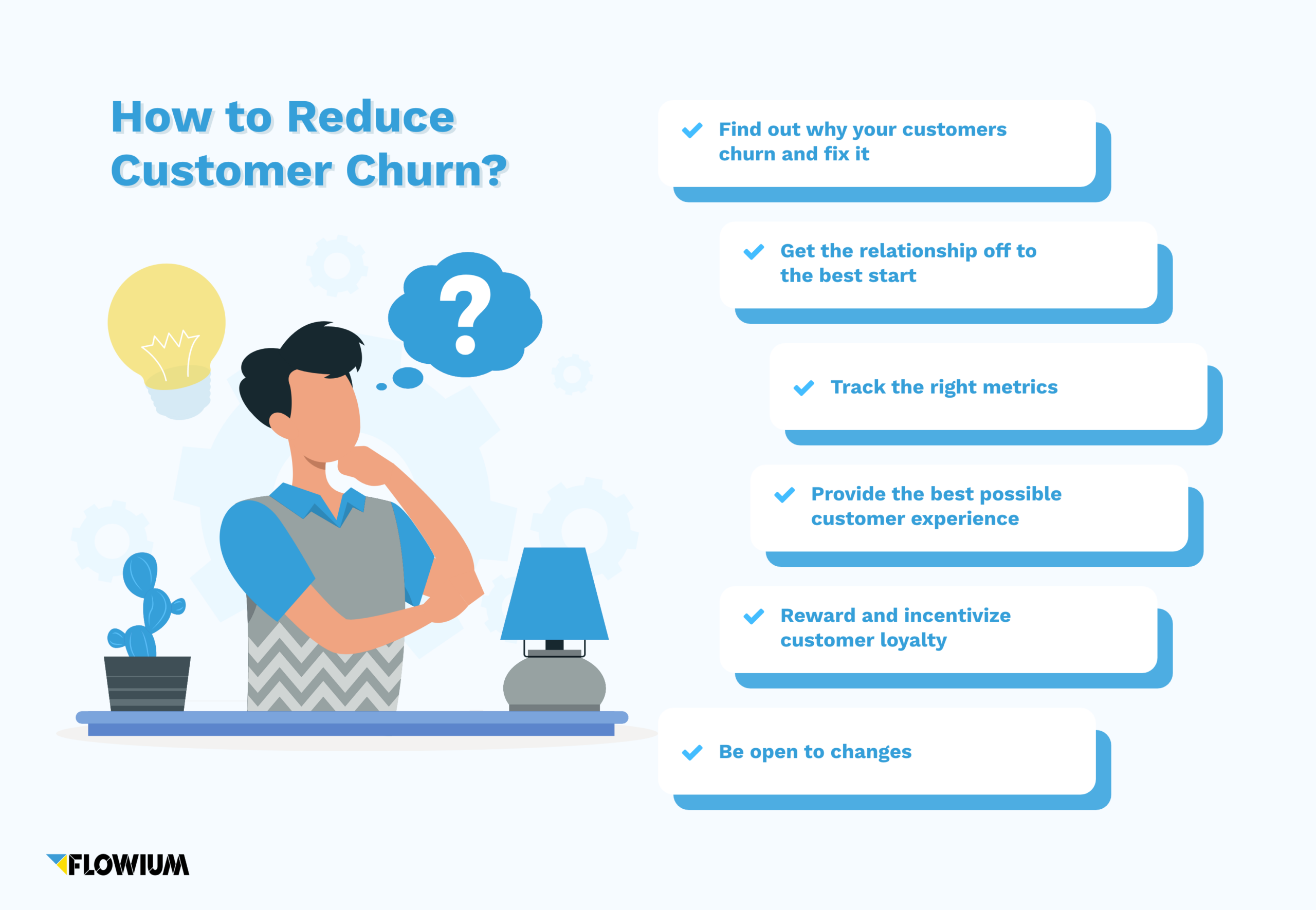
Find out why your customers churn and fix it
One of the best ways to reduce customer churn is by finding out why they’re leaving in the first place. This will tell you what changes need to be made to retain them.
This may seem obvious, but it’s actually one of the most overlooked steps when it comes to reducing customer churn.
If you don’t know why people are leaving, then there’s no way to fix it! It could be anything from pricing, customer service issues, or lack of occasional bonuses or discounts.
Get the relationship off to the best start
The first interaction with your customers is the most important one. First impressions are very hard to change.
So, chances are that if your customers don’t like your storefront, checkout process, or any other aspect of their shopping experience with you, they will leave without giving you another chance.
Therefore, ensuring they have an excellent first experience with your store and products is vital to reducing churn and increasing retention rates. Starting your customer relationships off on the right foot will encourage them to come back.
Track the right metrics
Another way to reduce customer churn is by tracking the metrics that can help you understand your customers’ level of satisfaction with your store and products and predict any possible churn.
Here are some of the most important ones:
- Customer Satisfaction Score (CSAT): CSAT is a quantitative measure of how satisfied customers are with their experience with your business. It ranges from 0-10 (0 being very dissatisfied and 10 being extremely satisfied).
- Net Promoter Score (NPS): NPS is a customer loyalty metric that measures the willingness of customers to recommend a company’s product or service to others.
- Customer Retention Rate (CRR): CRR is the percentage of customers you keep each month.
- Customer Lifetime Value (LTV): Your CLV represents the total amount of money you expect to receive from a customer over their lifetime.
- Customer Acquisition Cost (CAC): CAC is the cost of acquiring a new customer.
One practical way to keep tabs on these metrics is using a customer success software platform like Gainsight or ClientSuccess.
These platforms give you access to real-time data about your customers, including their interactions with your brand and what they’re saying about it online.
This data can help you identify trends in churn and predict which customers are at risk of leaving — before they actually do.
Provide the best possible customer experience
The best way to reduce customer churn is to provide an outstanding customer experience. You want your customers to enjoy shopping at your store, especially if they’re doing it for the first time.
The better the experience, the more likely they’ll come back.
That means optimizing everything from ensuring they can browse your product catalog easily to creating an intuitive and quick checkout process.
It may also mean providing excellent support in case they have questions before or after purchasing something from you.
For example, if they have questions or need help, ensure they get it quickly and easily — via email, phone, or live chat. You can also create an FAQ section on your website to cover your customers’ most frequent questions.
Reward and incentivize customer loyalty
One of the most important things you can do to reduce customer churn is to make sure you are rewarding and incentivizing customer loyalty. If your customers feel valued, they will be more likely to stay with your company.
If you want people to keep coming back, make them feel appreciated. You can incentivize them to shop with you again by sending them a free coupon or discount on their next purchase.
Apart from sending coupons or gifts, you may reward them for their loyalty with simple gestures. For example, you may include handwritten thank-you notes with every package you send to your customers. It’s a way of saying thank you for choosing your products and a nice gesture to show your customers that you care and appreciate them.
💡 Another great way of reducing customer churn is offering incentives for referrals. This can be as simple as giving your customer a coupon for $10 for each friend who makes a purchase at your store. This can help you expand your customer base while building relationships with your existing customers.
Be open to changes
In today’s world, change is constant. Customers are constantly searching for new products that will make their lives easier or more enjoyable. If they feel they can find something better elsewhere, they will stop shopping at your store and never look back.
That’s why it’s vital to stay open to changes. Whether it means introducing a new version of your bestselling product, adding a few more products to your store’s catalog, or changing the layout of your site, you can hardly ever go wrong with strategic changes based on a detailed analysis of your metrics and results.
Customer Churn FAQs
The average customer retention rate for eCommerce stores is only 30%. So, if you keep more than 30% of your customers within a given time period – congratulations! You’re doing it right. Don’t be too afraid of high percentages of customer churn, they are normal in eCommerce.
To reduce customer churn, you need to identify the cause of your customers leaving and then take action to stop it from happening. We’ve mentioned some practical ways to reduce customer churn in this article, but here are a few more tips: 1. Use technology to track the right metrics to determine your customers’ satisfaction levels, 2. Focus on improving the customer experience, 3. Focus on quality over quantity when it comes to your products, 4. Understand customers’ pain points, and 5. Take action based on what you learn.
Customer churn is the number of customers that leave your business. It’s an important metric because it shows how many people are leaving and whether your business is growing, declining, or staying the same.

